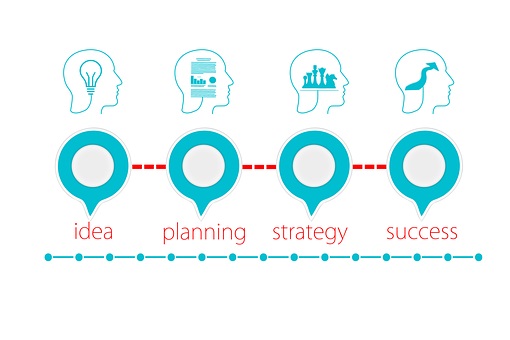Live Chat Software by Kayako |
|
Mar 24 |
Flash is in the Past!
Posted by WDS on 24 March 2020 09:47 am |
|
In the past, many older websites relied on a program from Adobe called Flash Player to run graphics. Often it was used in homepage pictures, sliders, and all over. Website owners could rely on Flash Player to display information on their business website. But no longer!
As of the start of 2020, Google Chrome has joined the ranks of browsers which no longer support Flash Player. In the cutting-edge world of web design, technology changes and best practices are updated. With newer web development platforms like WordPress, the need for our beloved Flash Player fizzled out. Flash held on as long as it could, but it’s time to remember it fondly and move towards the future, or in this case, the present. So, what does it mean if you’re still rocking Flash Player on your website? Let’s say you’re using Flash Player as an image or video slider on your homepage like most folks. Now, when someone visits your website, instead of that slider, they’ll see a whole lot of nothing! Is your logo in that Flash file? Do you have important sales information in there? Well, your website visitor is none the wiser. Time to bring your website into this century, or decade at least. Contact us today to get a free quote on updating your website. A new website will not only get your site up to date, it will help your customers move more easily around your site, and be able to contact you more readily. Not to mention the search engine gains you can receive. Are you experiencing financial struggles during the era of COVID-19? We’re here for you at Webtivity Marketing & Design. Ask us about how to get monthly terms, and how you can pay off your new website in easy, low, monthly payments. (941) 753-7574 X107 The post Flash is in the Past! appeared first on Webtivity Marketing & Design. Read more » | |
|
Feb 28 |
Activate Your Customer with Content
Posted by Meredith on 28 February 2020 11:33 am |
|
What does it mean to activate your customer? It means getting them motivated to make the next step in the customer life cycle. This could mean visiting your website, clicking on an ad, sharing a social media post, and hopefully making a purchase. To activate your customer with content, you need to make them feel attached to your brand, your business. How do you do that?
In the digital age, there are so many opportunities to activate your customers with content. Content can be created through blogging, social media, videos, pictures. And these are ways to activate your customers:
Each customer is different, and each one has a problem that needs solving. By creating all of this content, not only are you activating your customer, but creative content resonates with consumers, so implementing these tips should improve your marketing strategy and help to out perform your competitors. Your company’s branding and marketing strategies must span consistently across all media channels—and be designed to drive traffic back to your website. Contact Webtivity Marketing & Design to schedule a consultation.
The post Activate Your Customer with Content appeared first on Webtivity Marketing & Design. Read more » | |
|
Feb 21 |
Promote Your Small Business on Facebook
Posted by Meredith on 21 February 2020 11:13 am |
|
If you have a small business and it’s not on Facebook, then you’re missing out on a bunch of FREE advertising. Yes, free advertising! Of course, like Google, there are opportunities for paid advertising on Facebook. But every small business should be on social media, especially on Facebook. The most common age of Facebook users is between the ages of 25-29 at 29.7% of users according to Zephoria. This is also the most targeted age for marketers. So why don’t you promote your small business on Facebook? Here’s how to start.
First of all, create a Facebook business page. Add all of your important business information; name, contact info, hours, products, website if you have one. Make your profile picture your business logo, and add a cover photo that accurately reflects your business. Once you’ve created the Facebook page, you need to update it regularly. That means at least once a day. Users like to see behind the scenes photos too, such as employee photos, anniversaries, and things that show off your business. They like pictures and videos, just keep them on brand with what you’re trying to promote. Use Facebook’s free tool “insights” if you’re unsure of what and when to post. Friends of Fans is Facebook’s “word of mouth”, so encourage people to “check-in” or to tag your business in a post. You can do this by having them check in to receive a discount or tag to enter a contest. When a fan does this, their friends will see this and see your business. Free Advertising! Create events! Whether it’s a grand opening, a sale, a special tasting, whatever it is, create an event. That event will show up in the events tab, and people will see it. When people are interested in it, or check that they’re going to it, their friends will see that too! Engage with your fans as well as with other pages. Be sure you’re responding to questions and comments on your page. It’s equally important that your page is interacting with similar pages, as well as local businesses. These actions will help get your business name out there. If you need some help getting your business set up on Facebook or other social media outlets, Webtivity Marketing & Design has got you covered, reach out to us online or give us a call at (941) 753-7574! The post Promote Your Small Business on Facebook appeared first on Webtivity Marketing & Design. Read more » | |
|
Feb 18 |
5 Ways to Build Online Credibility
Posted by Meredith on 18 February 2020 09:39 am |
|
What is it that makes a business credible online these days? When businesses are competing for the same space in Google’s SERP’s, often it comes down to which business is more credible. So let’s break down some ways to build online credibility.
Search your business profile online and make sure that not only are all elements filled out accordingly, but that they match, and that they’re interesting to read. Add elements that would make you feel like the business is trustworthy if you were searching, such as pictures, logos, or an address. Include your staff if you have any. Yes, we’ve said it before but blog. Become an authority – an expert in your field. Don’t just blog, but blog often. Not only does blogging increase your online search engine traffic, but it can also increase your leads, and help to back up your sales pitch if necessary. Get active on social media accounts. More often than not, after someone finds a business online, they go looking for that business on Facebook, Twitter, or Instagram. If they find an active social media presence, that business automatically gets a leg up on the competition. By being social, you create trust and connect with your online audience. Be authentic, transparent, and be sure to listen and to respond to comments, questions, and reviews in a timely manner. Highlight what it is that makes YOUR business unique! What makes you stand out? Whether it’s your standards, your warranty, or your timeliness. Whatever it is that makes you different from your competitor, show it, improve upon it, and make sure your customers feel good about choosing your business over another. Nothing stands out to a potential buyer more than proof of credibility. Proof of credibility can include testimonials from previous clients, any awards your business has received, memberships/badges with credible associations, endorsements from credible sources, and even degrees from academic institutions. The more sources you provide, the more confident you will make potential consumers trust in your business. If you need help increasing your online credibility in the Bradenton or St. Petersburg area, give us a call or reach out to us online! The post 5 Ways to Build Online Credibility appeared first on Webtivity Marketing & Design. Read more » | |
|
Jan 30 |
You Need to Keep Your Website Fresh, Here’s How to Do It
Posted by Meredith on 30 January 2020 03:22 pm |
|
There are many reasons to keep a business website fresh. Customers like a fresh website, it gives them reasons to keep coming back to it. Technology is changing daily, which also makes technical reasons for keeping a website fresh. And search engines love fresh websites, so if you’re looking to rank higher in search engines, you need to keep your website fresh. How do you keep a website fresh?There are quite a few different ways to keep a website fresh. Because technology and design are constantly evolving, if your site was designed a few years ago, chances are it needs an upgrade. Not only is it outdated, but even if it was popular a few years ago, it probably isn’t mobile friendly (which is a must these days) and it probably isn’t very SEO friendly. It is worth it to invest in an upgrade.
Check your website from time to time for broken links. For example if you have linked to another business, or blog, perhaps they have gone out of business or changed something. If that link is no longer working it will show up as an error or a broken link leading your consumer to go elsewhere. Google keeps track of how fresh your website is. If you increase the size or footprint of your website each year, Google will reward you for being “fresher” than other sites. You can increase your footprint by creating new pages. It’s also important to update the content on the pages already on your website. This can be done by adding content, adding links to other areas of your website, or by adding photos to your page. You can also change the ALT tags on your photos. This is important because SEO rules are always changing, so the ALT text that was once there, might not be important SEO wise any longer.
Creating a blog is a great way to update your website. Not only does a blog keep your website fresh, when blogging about things your target market is interested in and searching for, it will attract new visitors. See our post on blogging. You can always repurpose a blog and update it too. Just don’t rename the URL, or you will lose all the SEO benefits gained from it. Keep in mind that keeping your website fresh will benefit you. It will benefit your search engine traffic, your rank, and help to generate more traffic. If you lack the time to do this, it’s worth it to consider a professional marketing team and web designer to do these tasks for you. If you’re looking for a fresh website, we’d love to hear from you! The post You Need to Keep Your Website Fresh, Here’s How to Do It appeared first on Webtivity Marketing & Design. Read more » | |
|
Jan 27 |
10 Things to Know About Online Reputation Management
Posted by Meredith on 27 January 2020 02:56 pm |
|
Owning a business today, is ten times harder than it was ten years ago. Word of mouth spreads like wildfire with the popularity of social media platforms such as Facebook, Twitter and Instagram. Maintaining your reputation across these mediums is important, and requires strict diligence. A little effort goes a long way. Here are 10 things to know about online reputation management.
Remember, the major review sites have steps in place for inaccurate reviews. If you have a review from someone who was not a customer, you do have the right to flag it as inappropriate, or in violation of the site’s guidelines. For help maintaining your online reputation for your business, contact us. Webtivity is here for you. The post 10 Things to Know About Online Reputation Management appeared first on Webtivity Marketing & Design News. Read more » | |







